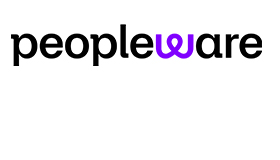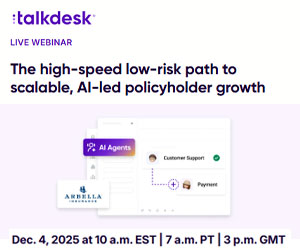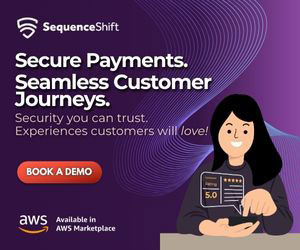Annette Franz writing for injixo explains how to improve the customer service experience with journey maps.
Working in a call centre, whether you’re on the phone or on the floor managing operations, means that you’re front and centre with customers at all times.
It also means that you know the importance of delivering a great service experience for your customers. If that’s not an area of focus for you, it certainly ought to be!
The customer experience is an area of obsession for many organizations today, and some of them are doing a better job of delivering on it than others.
For many businesses, the call centre and customer service lines are often the most-frequent point of interaction with customers, making it that much more important to understand the experience customers are having. In this article, I’ll outline how to best do that.
Customer Experience vs. Customer Service
Let me first take a step back, though, and define a two often-misunderstood terms – namely, customer experience and customer service – to ensure that we’re all on the same page. As you may or may not know, these are two very different things.
I define customer experience as (a) the sum of all the interactions that a customer has with a company over the course of the relationship lifecycle and (b) the customer’s feelings, emotions, and perceptions of the brand over the course of those interactions.
Many people confuse customer experience with customer service; they are not one and the same. Customer experience is actually the “umbrella discipline,” so to speak, while customer service falls under that umbrella.
“Customer service is what happens when the customer experience breaks down.” That’s how Chris Zane, owner of Zane’s Cycles, defines or differentiates the two.
I think that’s a great way to put it. Customer service is just one aspect, one touchpoint in the overall customer experience. It’s not only a department but also what we do to/for our customers.
Measuring Customer Experience
OK, back to understanding the experience your customers are having. There are tools for this; I’ll name just two important ones for now: (1) surveys or other listening posts and (2) journey maps. It’s the latter, journey maps, that I’ll focus on for the rest of this post.
The Value of Journey Maps
In simplest terms, journey maps allow you to walk in your customer’s shoes and chart their course as they interact with your organization (via whatever channel, department, touchpoint, product, etc.) while trying to fulfill some need or do some job, e.g., call support, purchase a product, etc.
The map describes what customers are doing, thinking, and feeling at each step in the journey. It allows you to identify key moments of truth, i.e., make-or-break moments or moments during which the customer decides if he will continue to do business with your or not, and to ensure that those moments are executed delightfully. The map is created from his viewpoint, not yours. It’s not linear either, nor is it static.
How to Create a Journey Map
So let’s think about a customer service experience. It typically begins with the customer experiencing or identifying an issue, a question, or some other reason for which he needs to contact your call center. And so the journey begins. I won’t go through it step by step, but think about just that.
What will the customer do next? Look for your phone number, find a web form to submit a support request, etc.? What happens next? And then what? And have you made it easy for him to do those things?
That’s the process you’ll go through to outline that strawman of a journey map for a customer service call. Ultimately, you’ll create the map internally in partnership with stakeholders and then validate the actual journey with customers. Your customers must be involved in mapping, and the maps must be created from their viewpoint.
Mapping the customer service experience is one of my favorite journeys to map because it is such a rich experience and there is such a huge learning opportunity here.
Why? Most people assume that the customer service experience starts and stops at the call centre. This simply isn’t true.
Note that I mentioned previously that maps are created in partnership with stakeholders. For this particular map, there are a lot of stakeholders.
Bringing in Stakeholders
Consider this. The reason someone calls customer service is because the experience broke down somewhere upstream; in other words, the product wasn’t working right, the documentation wasn’t clear, sales sold the dream and not what the product actually does, etc.
These departments should be part of the mapping exercise and process so that they can fix what happens upstream in order to reduce the pressure and the load downstream, on the customer service representatives.
Next Steps
For the sake of this post, I have totally simplified the process (and I’m happy to answer any questions about the process), but know that there’s a lot more involved to creating the map that helps you understand the current state of the support experience.
Focus on the current state in your initial meetings and mappings. A lot of folks want to dive into designing the future state of the experience, but as I like to say, you can’t transform something you don’t understand.
Understand what the experience looks like today. Then listen to customers and bring their feedback into the map. From there, design the future state.
Once you’ve designed the future state, you need to act. You don’t want the map to just be a pretty picture on the wall; it is a catalyst for change. Use what you learned to actually improve the experience for your customers. They’ll thank you for it!
This blog post has been re-published by kind permission of Peopleware – View the Original Article
For more information about Peopleware - visit the Peopleware Website
Call Centre Helper is not responsible for the content of these guest blog posts. The opinions expressed in this article are those of the author, and do not necessarily reflect those of Call Centre Helper.
Author: Peopleware
Published On: 27th Feb 2023 - Last modified: 9th Dec 2024
Read more about - Guest Blogs, Annette Franz, Peopleware






 Peopleware is a leading workforce management (WFM) solution, trusted by over 500,000 users in 30+ countries. With smart forecasting, automated scheduling and real-time management, organizations can optimize workforce efficiency and keep work aligned with demand. From precise time tracking to flexible planning, Peopleware helps organizations boost operational efficiency and foster a more engaged, productive workforce.
Peopleware is a leading workforce management (WFM) solution, trusted by over 500,000 users in 30+ countries. With smart forecasting, automated scheduling and real-time management, organizations can optimize workforce efficiency and keep work aligned with demand. From precise time tracking to flexible planning, Peopleware helps organizations boost operational efficiency and foster a more engaged, productive workforce. 































